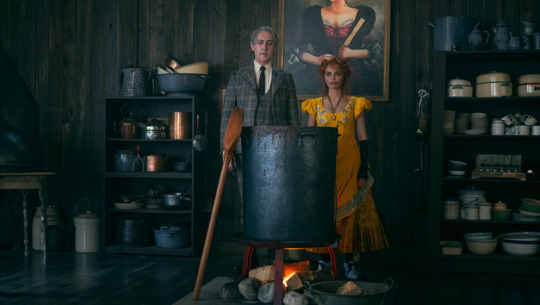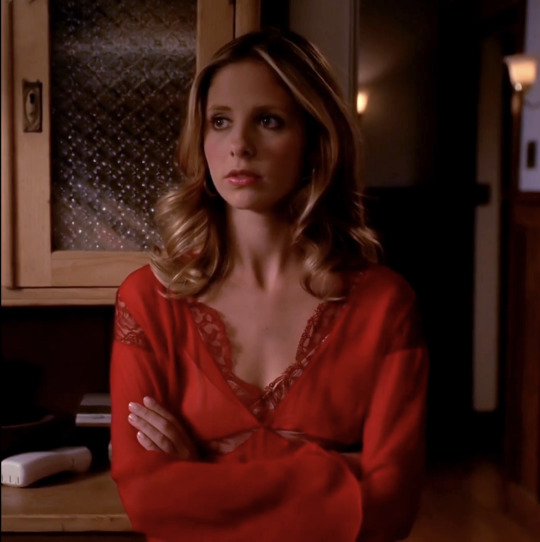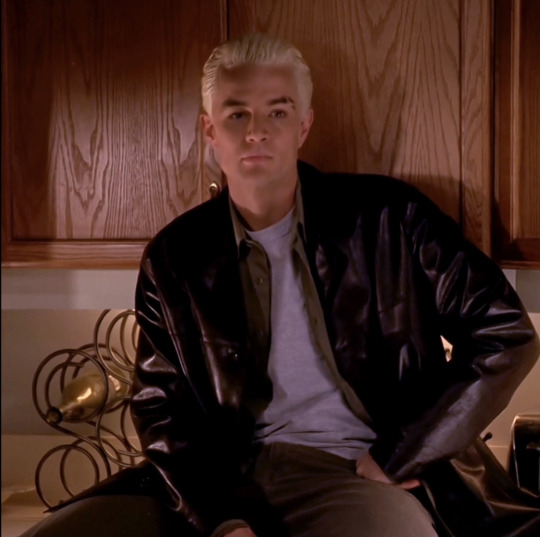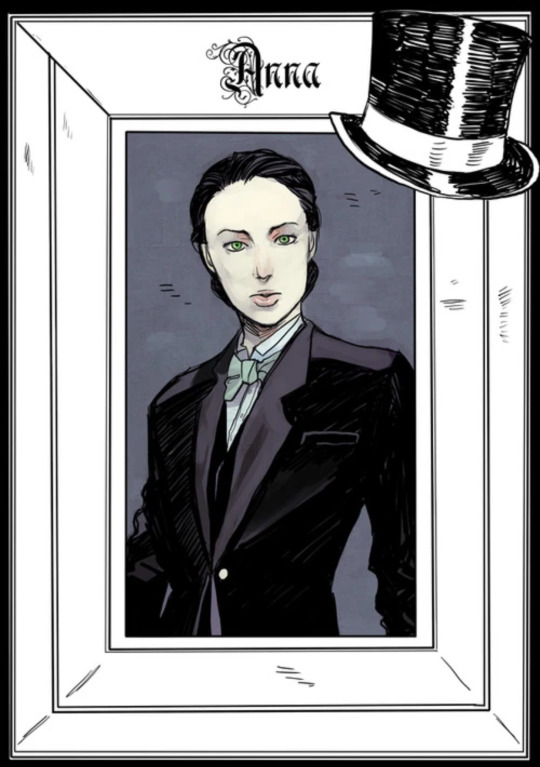#i was looking for something on Cecily!
Explore tagged Tumblr posts
Text
“Women's efforts to provide for their younger sons and daughters often brought them into conflict with their oldest sons. As heirs, eldest sons frequently resented provisions for their siblings that reduced or burdened their inheritances. Mothers' efforts to provide for their younger children were particularly threatening to their eldest sons when they were heiresses and had power to dispose of their own property, but men's provisions for their widows also caused trouble between women and their sons. Indeed, husbands' provisions for their widows usually represented a much heavier burden on the family's estates than their bequests to their younger children. Furthermore, widows' dowers and jointures often interfered with the heir's power over his inheritance for years... Disputes about the provision for widows and women's efforts to secure the welfare of their daughters and younger sons often became intertwined when women served as their husbands' executors.
All of these factors played a part in the bitter quarrel between Cecily, dowager marchioness of Dorset, and her eldest son Thomas, the second marquess. In 1504, Lady Cecily, who was her father, William Lord Bonville's, sole heir and the executor of her husband's estate, announced her intention of marrying Lord Henry Stafford, the duke of Buckingham's younger brother. Stafford, who paid 2,000 to Henry VII for permission to marry her, obviously expected the match to be a profitable one. The young marquess was understandably concerned about the effect the marriage would have on his inheritance, given the legal rights his mother's new husband would acquire over her and her property. The dispute escalated until Henry VII intervened. The settlement they signed after appearing before the king's council permitted Cecily to continue as her first husband's executor despite her remarriage. Under the terms of his will, she would receive the income from the estates he wanted set aside to pay his debts. However, she would not receive her dower until the debts were paid and she had turned the property over to her son. In addition, the council severely limited Cecily's power to dispose of her own inheritance: after her death, she had to bequeath all of it to Thomas; until then she could grant only lands worth up to 1,000 marks a year, and then only for a limited period of years. The obvious intention was to prevent the marchioness from permanently endowing her new husband at the expense of her eldest son. Her rights as an heiress were severely limited in his favor and, in a larger sense, in favor of the institution of primogeniture.
By 1522, Lady Cecily and her son were openly feuding once again, this time about provision for her younger children. As a result of Cardinal Wolsey's mediation, they signed another elaborate agreement. Each of them promised to contribute to the dowries of the marquess's four sisters, while in addition Cecily agreed to create annuities from her estates for three of her younger sons.”
- Barbara J. Harris, “Property, Power, and Personal Relations: Elite Mothers and Sons in Yorkist and Early Tudor England"
#historicwomendaily#cecily bonville#i was looking for something on Cecily!#16th century#english history#tudors#kinda#gender tag#my post#queue
83 notes
·
View notes
Text









photos for next week's episode!
#schmigadoon#schmicago#aaron tveit#dove cameron#keegan michael key#cecily strong#kristen chenoweth#alan cumming#tituss burgess#okay it looks like we get 'talk to daddy' w/ dove cecily and keegan#then aaron and dove fall in love#which was hinted at in an interview#kristen and alan get their big number#and i assume something goes horribly wrong at the end of it all#so three big songs for sure#personally? imploding when we hear dove and aaron together their voices are so so smooth and gorg
145 notes
·
View notes
Text

Gave my Cecily figure a fresh coat of paint
#cecily deveroux#she broke off her base at the ankles so i had to put her back together with uv resin and a dream#so i did my best to make things look intentional painting figures isnt something i have a lot of practice with#my art
6 notes
·
View notes
Text
now i just wanna go write the mahina woods scenes....
#i like how at the beginning cecily says something about how keika and ahuru are the only people known to have 'escaped' the woods#and keika pauses and goes 'escaped? is that what they think?'#idk how to put it into words but its just a moment that always stands out to me when im reading through it#like its talked up as this big scary place that no one's ever survived its dangerous and magical and-#escaped? he can still hear the owls when he closes his eyes. it was his home once.#i just realised i have NEVER considered what his hesitance must look like to the others.......#they ask him to take him to the scariest place on the continent and he says no. he's almost angry about it.#they think he /escaped/ they think he's scared to go back bc he wont make it out this time#but what he's actually scared of is that the river wont even let him cross. he's scared to be sent away all over again.#keika is 22 and he misses his mother. he can never go home. i cannot think of the mahina woods without thinking of him 😭
4 notes
·
View notes
Text
prank gone wrong; marauders (sirius black)

pairing: marauders (sirius black) x reader | 2.1k words plot: the marauders prank one of your best friends, you're not too happy about it and take matters into your own hands, just to have one of them a bit smitten by you. authors note: hi, i brewed this up last night. I don't really know what this is but i hope u like it :) <3
navigation

“I forgot my textbook, fuck.” Amelia complained, hand on her forehead. You sighed and pushed your sunglasses up, squinting your eyes at her. You took a drag from your cigarette and spoke with a sigh.
“I’ll get it for you, I need another pack anyways.” She waved her hand, as if to swat your offer away. “You don’t have to.” She tried but you shook your head and lifted yourself to your feet. You took your ropes off, it was too hot anyways. “Just shut up.” You offered with a grin.
Without waiting for an answer you took off. It would be a rather long walk, the Slytherin dorm was the furthest away. You needed some time away from your the girls and a new pack of fags.
Amelia, Philippa and Cecily were nice, not to misunderstand but they were shallow. Still you strangely loved them, how carefree they seemed.
Their newest topic to gossip about was if Marlene Mckinnon had gotten a nose job over the summer break. She didn’t, not that you cared. She looked fine, just like she did the past five years.
You didn’t know her though, you didn’t know any Gryffindors to be honest, so you didn’t have any ground to speculate.
The only Griffyindor you knew was Lily Evans. A muggle-born witch, not that that changed anything about her abilities.
She was kind, shy and had hung around with the infamous Marauders. Four boys who liked to play pranks on many. You didn’t care much, they never targeted you.
On your way back, your pack of cigarettes in your pocket and Amelia’s textbook in hand, you watched the sky, birds gliding above your head. You pushed a cigarette between your lips and lit it.
The smoke filled your lungs with a comforting feeling. You heaved a sigh and blew some more smoke through your lips. You wondered what they would talk about next? A poor Hufflepuff’s boobs or a Ravenclaws fake behavior to suck up to Slughorn?
You wouldn’t complain though, no matter how shallow they were, they were still your friends. They took care of you, cared for you and did their best to be good friends, since the first year they were all you had.
You caught sight of the courtyard and the blanket you had spread out to study on. The girls sat, laughing and talking. With another drag from your cigarette you flicked the stud away and made your way to the three.
“Here you are.” Philippa smiled at you. She patted the spot next to her and Amelia reached for the book in your hands.
“Thanks.” She smiled at you and you gave a smile back. “No problem.”
“This is so good.” Cecily smiled and drank a bit more from a cup you never saw before.
“What’s that?” You asked as you leaned back, taking the sun in. “Iced coffee." She answered, her words slurred the tiniest bit. Your eyebrows furrowed.
“You okay, Cici?” Amelie asked as he placed her hand on the girl's shoulder who just nodded with a content grin on her lips.
She seemed… drunk?
“What’s up with her?” Philippa whispered as she looked at you, her eyebrows furrowed in confusion. “Where’d you get that, Cici?” You tried but she kept drinking.
“She went to the toilet a few minutes ago and came back with the drink in hand. I figured she got it from the kitchens or something.” Amelia said, face worried.
Without much thinking you took the drink from Cecily and looked her straight in the eyes. “Who gave this to you?” She frowned but needed a moment to form the words in her mouth.
“Pot..Potter.”
She stammered and hot rage burned through your body. You never cared much about their pranks but to target a kind, loving girl who minded her business better than anybody else was infuriating.
You threw the cup to the ground and lifted yourself off the ground. “Get her some water, I’ll take care of this.”
Amelia nodded and rummaged through her bag for a bottle. Philippa caressed Cecily’s hair and gave you a tight nod. You walked as fast as you could manage, hands cold and features angry.
Students stepped out of your way, eyes wide as they watched you march through the corridors. You caught sight of some Griffyindors, Lily to be accurate. They were sitting on a bench, giggling with each other.
“Where are they?” You spoke, interrupting their conversation. Mckinnon turned around, eyes squinted at you, Lily watched you with wide eyes.
“Who?” She tried but you crossed your arms with a roll of your eyes.
“Those idiots you hang around with, Potter and the others.” Alice winced and threw her gaze to the stone ground.
“What did they do?” Lily asked again as she raised to her feet.
“They fucked with one of my friends and I’m not too happy about that.” Marlene’s face softened, her mouth opening to speak. “Who-”Cecily.” Lily threw a hand over her mouth with a gasp.
“But, she’s so sweet.” You nodded, jaw tightening.
“Yeah, well. Sweet Cecily is now sitting in the yard, drugged out of her mind because Potter decided it would be funny.” Alice frowned and got to her feet as well.
“That’s too far.” She said and you nodded. “So, tell me where they’re hiding.” Lily sighed and nodded.
“They’re in our common room, password’s Dilligrout.” You nodded and gave her a sad smile.
“Thank you, Lily.” She turned to you again and gave you one as well. “They went too far this time, to drug Cecily. You better teach them a lesson.” You nodded and turned to walk away.
“Let me know how she is, when you see her.” You looked at her, not sure what to answer. With a nod you said. “I will.”
Outside the Griffyindor dorm you threw the password at the picture and it opened, whispering things like snake in the common room, how odd.
The room was dimly lit, quiet but faint voices could be heard. With slow steps you emerged into the warm place. Some first years almost shrieked at the sight of you but you only gave them a nod towards the stairs. Without much thinking, they fled the scene.
The morons were splayed out on the chairs and couch, laughing to each other. They haven’t noticed you yet. So you thought to change that and with fast steps you made your way to the empty chair before the fire. The voices stilled, silence embracing you.
“Y/N.” Sirius, the pureblood run away whispered. You didn’t answer but instead plucked a cigarette from your pack and lit it quickly. Dramatic, but who cares.
“I always knew that you lot had a knack for stupid pranks, I mean who doesn’t know.” You paused to take a drag. Potter sat himself up, Peter hadn’t moved since he watched you appear, face contorted in fear.
“But to drug someone in broad daylight, that's another level of idiotic.” James seemed to catch on and fumbled with his hands.
“What is it to you, who we prank?” You barked a laugh as you leaned forward. Remus couldn’t look you in the eyes, Sirius stared at you, not moving a limb.
“You don’t even care who you prank, now?” James sighed and crossed his legs, his arms crossed.
“Let me enlighten you, Potter. Cecily Santoro, who you pranked is a very kind soul, one of my best friends, limbing behind in herbology, deathly afraid of frogs and loves coffee with all of her heart. But you don’t care about any of that because she’s a snake, a vicious horrible Slytherin. So when you pushed that cup in her hand this afternoon, she couldn’t say no.
She loves coffee too much to think twice about taking anything from a Marauder. She probably thanked you with a smile on her face and you had a good laugh, right?
Well, she’s drugged out of her mind, she’ll fail her herbology exam and cry a good week about it. But you wouldn’t care about that, because she’s just another Slytherin, a too good enough reason to pass up on pranking her.”
He didn’t answer, Remus sighed and massaged the bridge of his nose. You blew some smoke and shook your head.
“I hope you lot are proud of yourselves. You’re not an inch better than Malfoy or Nott.” Sirius stood and pushed his hands through his hair.
“I’m sorry.” James whispered.
You chuckled and threw the done fag into the fire which hissed upon the impact. “I’m not the one you should apologize to.” Sirius took a step towards you, face in a sorry twist.
“We fucked up big time then?.” He said. His eyes dared you, to argue with him. To fuel what he felt in his core.
James hissed at Sirius. “What the fuck are you doing?” He now stood in front of you.
“What do you want then?” His hands crossed he looked at you, eyes devouring your frame. Remus stood and put a hand on Sirius’s shoulder. He swatted it away and proceeded to look at you.
“Apologize.” He nodded.
“You are all to apologize to Cecily or I’ll bring this matter to the headmaster.” James sighed and narrowed his eyes at you.
“So you’ll play your cards?” You had to chuckle. You pushed Sirius down onto the couch, faces mere inches apart. Sirius licked his lips, eyes swaying from your eyes to your lips.
“If I were to play my cards, you’d be expelled and not allowed to step even a toe back on school grounds, you daft idiot.” You gave him a small smile before you continued.
“Don’t think i don’t know the ridiculous rumors you guys spread about me but just to assure you, I might fulfill them soon if you anger me any more.” You patted his cheek and turned to leave.
You turned around once more to face Sirius who watched you, his eyes bored into your face, he licked his lips as he watched you leave. Your eyebrows furrowed and you shook your head.

Cecily was back to normal, Amelia and Philippa had taken her to the infirmary last night. Madam Pomfrey had complained on end but let her sober up nonetheless.
“I’m fine, really.” Cici threw Philippa a small smile and tried to snatch her bag from the taller girl. “Nuh uh.” She slapped her hand away and continued walking.
Just as you turned the corner four figures sprung to their feet. The Griffyindor boys walked up to you and obviously struggled to deliver the promised apology. You had to suppress a laugh at the sight of the four.
“What do you want?” Philippa snapped at them.
“We, umh, wanted to apologize for yesterday.” James begann.
“What we did was out of line.” Remus carried on.
“We regret it.” Peter almost whispered.
“After your dear Y/N gave us a good talking to, we apologize for what we did.” Sirius finished off. Cecily turned to you with a confused expression on her face.
You just shrugged and gave her a small smile. The girls didn’t answer but started walking.
You stayed behind and pushed a cigarette between your lips. Sirius was quick to raise his lighter to your lips.
“That was Oscar worthy.” You chuckled. James frowned and kicked with his feet before himself.
“Are we good now?” Remus tried but you huffed in amusement.
“Sure sure.” You puffed some smoke and took the cigarette to push it between Sirius’ lips. He stared down at you with darkened eyes.
“For the nerves.” You smiled.
He took a drag and blew the smoke above your head.
“You’re quite feisty.” You chuckled and patted his shoulder.
“First time for you?” He chuckled and took another drag. You took a step to leave them behind but Sirius was quick to hold onto your arm.
“Hogsmeade next friday?” He spoke, cigarette still hanging between his lips, some strands from his bun fell over his face and you would have to lie that you didn’t think he was attractive.
“Are you asking me out right now?” You asked with a grin on your face.
A grin formed on his face as he inspected your face.
“Will you?” You wringed your arm from his grip. You took a step towards him and took the cigarette from his mouth, took a drag and blew the smoke towards him.
“In your dreams, Black.”
He barked a laugh and watched you leave with the cigarette you had shared. Fuck, was he smitten.
#harrypotter#hp fanfic#marauders imagine#the marauders#marauders era#sirius black#harry potter fanfic#sirius black x reader#remus lupin#peter pettigrew#sirius black imagine#sirius black fanfic#siriusblack#sirius orion black#marauders fanfiction#marauders
288 notes
·
View notes
Text
Wrecked (Part 2)

Pairing: Alpha Frank Castle x Omega Reader, Alpha Billy Russo x Omega Reader
Trigger Warnings: References to infertility, smut
Summary: When Frank Castle found his way to your small town bar, you thought you had finally found your Alpha despite being a "wrecked omega" but when his best friend, Billy Russo, blows through town, your world tilts on its axis. You thought you found your happy ending but was it just more wreckage for your life?
A/N: Thank you to my beta reader and hype princess, @whisperlullaby
Wrecked Masterlist

Thursday night ended up being busier than usual with a large group coming in to celebrate… something. You never quite caught the reason. You were so busy tending the bar that you rarely looked up to see faces. It was nice to see the tip jar nearly overflowing towards the end of the night.
You were pulling drafts for a couple of regulars when the door flew open and a grinning Cecily walked in as if she was a triumphant warrior returning from battle. You laugh and announce loudly, “Batten down the hatches! Hurricane Cecily is blowing through town!”
“Hey!” Cecily laughs as she hugs you, “The place looks great! How are you?”
“I’m great. I’m really good. Looking forward to hearing more about your adventures.”
“Yes, but for now, I need a drink!” Cecily drags you to the bar.
“Let me guess… a blue motorcycle?” You smirk.
“You know me so well,” Cecily grins.
“How was your trip?” You smile as you make her drink.
“Fabulous! Saw the sights, made some friends, and had some good times. Pissed my dad off to all hell and back because I refused the match he arranged,” she giggles.
“He should know better by now,” you laugh. Cecily’s father had won the genetic lottery when he, a beta, and her mother, also a beta, produced an Omega offspring. He had hopes of marrying her off to make connections and strengthen the family standing. What he hadn't planned on was her strong will and refusal to marry until she fell in love. It was something you envied about her and probably one of the things that had drawn the two of you together. She was an Omega that a family centered their hopes on which she refused to comply with and you were the broken Omega who had disappointed your family with your inability to comply.
“No matter their designation, men are all the same. Hard headed and yet oblivious,” Cecily rolls her eyes.
“Can't argue with that. I-”
"Oh, Jesus. Here we go," Frank's raspy voice interrupts.
"Hey Frankie," Cecily teases.
“Welcome back. What trouble are you planning to get into?” Frank asks as he takes the stool next to her.
“All the fun kind,” she grins.
“Oh, Cec, Frank's best friend is coming to town soon. You'll have to meet him. I have a hunch you two will be hilarious together,” you giggle as Frank narrows his eyes at you.
“Don't give her any ideas. Those two would tear apart the town together,” Frank turns to Cecily, “And if you let him, your bed, too.”
“Well, I'm certain I can show him a good time while he's here," Cecily says slyly.
"Heard from him yet?" You ask.
"Yep," Frank says with a withering glance at Cecily. "He'll be here tomorrow. Leaving Sunday night or Monday."
"I can't wait to meet him," you wink at Frank.
Cecily gives him a wicked smile, "Your best friend must be so interesting. Tell me about him."
Frank looks up at the ceiling as if praying for help but, knowing Cecily won't give up easily, he gives a few details, "He's an Alpha. Owns a security company. Real smooth with the 'megas and isn't the kind anyone can pin down. Just your type."
"What are you trying to say, Frank?" Cecily narrows her eyes.
"Nothin'," Frank gives a shit eating grin.
"Mm-hm," Cecily sips her drink.
"Okay, you two, enough. I've got the room ready for him and a bottle of booze waiting," you say as a fresh group comes through the front door, "Play nice while I deal with the newcomers."
You walked away unworried about the two. Despite the way they ribbed each other, they actually liked one another. Cecily held respect for the man who had seen the gem that is her best friend and Frank was grateful for the unwavering support she showed you. So, while they always had harmless barbs to lob at each other, there was a mutual respect shared.
Occasionally as you poured drinks and served, you would glance over to see them conversing companionably. In one such moment though, your stomach dropped a bit seeing Cecily's hand on his knee as she leaned in to whisper in his ear. You shook the feeling away, knowing she would never do anything untoward, and relaxed even more when Frank laughed while shaking his head. She was probably making a comment she didn't want overheard. You berated yourself for being so insecure. Frank was a good man and, even if he did choose to leave you for an Omega without your hindrances, he would never hurt you in that way. He would tell you... or he would just disappear, which was one of your biggest fears. One day, you would wake up alone and every trace of your life together would be gone.
Just the thought was devastating. You had never expected him to stay this long and now you were spoiled by the presence of an Alpha in your life. You shake the negative thoughts away. Frank is your Alpha and he is going to mate you. But even that thought came with doubts. Your mind wouldn't let you believe that he would really mate you. He had said it to comfort you. He hadn't really meant it. He wouldn't tie himself to a wrecked Omega for life. No Alpha would.
"Hey! Can I get another one?" A voice pulls you out of your melancholy thoughts.
"You got it," you smile at the man and pour. The night is busy for a Thursday but you manage to make it back over to Frank and Cecily after a while.
"Frank has been filling me in on his friend. I can't wait to meet him," Cecily smiles.
"Well then, he's given you more information than he's given me," you laugh with a wink at Frank.
"That's not true. I've told you stories about Bill," Frank laughs.
"I had pull teeth just for you to tell me his last name!" You assert.
"That's highly personal information," Frank smirks.
"What is his last name?" Cecily asks.
"Now see what you've started!" Frank exclaims. You stick your tongue out at him and laugh as his face drops. "Oh, very mature," Frank grouses.
"I'm sure your thoughts were when I did it," you tease him, leaning over the bar to whisper the words.
"You're gonna be using it tonight," Frank groans out and then grabs you by the back of the neck to lay a kiss on you. His tongue plunders your mouth before he releases you with a smirk. You knew you were in for it when you got home and you couldn’t wait.
“Ugh, now I’m looking even more forward to this friend of yours coming. Maybe I can interest him in a little PDA,” Cecily pouts. “I’m heading out. See ya tomorrow.”
“Night,” you and Frank say in unison.
“Do you want me to stay?” Frank asks.
“No, it’s okay. Head to the cabin and rest. I’ll see you in a bit,” you reassure him.
“Alright. Be careful,” Frank gives a backwards wave as he heads for the door.
The cabin. You always called it that or the house, never home. Part of you was scared he would correct you if you did; the other part worried it would scare him away. It was a precarious place that you stayed mentally with Frank. A fine line you balanced between loving his presence and fearing his absence. Would you ever feel confident in his commitment?
Billy coming had to mean something. Frank wouldn’t introduce you to his best friend, the closest thing he had to family, if he didn’t have intentions of staying. Maybe it was because you felt like Frank always had his eye on the door, waiting for the moment he would have to leave or for his past to catch up to him. How much did you even really know about his past? Maybe meeting Billy would give you more insight into him.
When the bar closed a couple of hours later, your bouncer, Jordan, walked you to your car. A precaution he insisted on since the incident with the drunken Alpha. You wondered at times if Frank had asked him (or threatened his life) to ensure you got to your car safely. He really was sweet in his gruff way.
By the time you made it to the cabin, the windows were dark. The porchlight and a small lamp just inside the front door were on but the rest of the house was dark and quiet. You smile to yourself, remembering Frank offering to stay until closing. Obviously, you had made the right decision to send him home since he was already asleep. He worked hard and deserved the rest.
You quietly make your way to the bathroom and quickly wash up. You peek out the door at him and a sliver of light falls over his body. His arms were curled behind his head, his bare chest rising and falling with slow breaths, and between his thick thighs his heavy cock laid. You lick your lips and feel a surge of disappointment that he’s not awake but then a wicked thought crosses your mind. He never shies from waking you up by fucking you… maybe he wouldn’t mind the same treatment. After all, he had said you'd be putting your tongue to work when you got home and you didn't want to make a liar out of him.
Shedding your clothing, you make your way to the bed. The sliver of light from the bathroom still lays over him. When he first came to your house, he would wake at every noise or touch but over the months, he had relaxed and was actually a fairly deep sleeper. Leaning over him, you lick a stripe from tip to base. His cock jumps and he stirs but his eyes don’t open. You repeat the action bringing another small response from him. Taking him into your mouth, you work your way down his thick cock inch by inch, your hand wrapping around what you can’t fit. Frank makes a sexy groan as he flexes towards you, his eyes slowly open as you watch. He grabs your head and moves you slowly up and down.
“Fuck, this’s the hottest way to be woken up,” he growls. “Couldn’t wait until the morning for this cock, huh, babe? Had to have it in you one way or the other?”
You moan your agreement while hollowing your cheeks. Frank’s deep growling moans are making you wet and you squeeze your thighs together to relieve the pressure.
“Goddamn, I can smell you. Getting wet from sucking this cock. Get up here. C’mon,” Frank uses his grip to pull you away from his cock and then up to straddle him. You immediately position him at your entrance and sink down, biting your lip to hold in your moan. “What’d I tell you about that?” Frank pulls your lip from your teeth.
“Don’t,” you whisper.
“I wanna hear every sound,” he insists. “Now, you wanted this cock so bad, let’s see what you do with it.” His smirk relays the challenge as he lays back, folding his hands behind his head.
Never one to back down from such a challenge, you knew you had to make this good. You worked your hips to get every last inch of his thick cock inside of you. He was so thick that each drag of his cock was a direct hit to your g spot but he was in so deep there was a bite of pain when he hit your cervix. You ignored it as you rode him and eventually it lessened to a mere whisper of discomfort. Putting your hands on his chest, you leaned a little more forward to grind your clit against him and let out a long moan as the new angle hit even more pleasurably.
“That’s what I like to hear,” Frank groans and then flexes up into you.
“Oh! Fuck,” you whimper. You move more quickly, squeezing him as you barrel yourself towards orgasm. Not worried anymore about living up to his challenge, that first spark had alighted in your belly and you chased it.
Frank ran his calloused fingertips over your nipples, no longer content to be a mere observer. He squeezed and feathered over them while watching your face. His hips came up to meet yours and your mouth dropped open to let out a small cry. He repeated the motion until he saw that sweet look pass over your face. The one that told him you were too far gone to turn back and he held himself back from coming with you. He wasn’t ready to be done yet.
“I’m coming,” you cried as the waves of pleasure took over. Your body spasms around him as you ride out the orgasm.
“Atta, girl. Squeezing my cock so tight. Fuck,” Frank watches as you fall apart on top of him. When your orgasm had run its course, you stopped for a moment to catch your breath but it didn’t last more than a few seconds when a smack landed on your ass and Frank’s gruff voice said, “We ain’t done yet, ‘mega. You wanted this cock so bad, you woke me from a dead sleep. Now you gotta finish what you started. Move that ass.”
The shit-eating grin on his face made you want to be just a little defiant. You pull off of him and he immediately protests, “Where do you think you're going, ‘mega?”
Pushing him back down on the bed, you lean in to give him a small but potent kiss. “Trust me, Alpha,” you give him a seductive look before turning around and straddling him again in reverse. You work his cock inside of you again and then look over your shoulder, “You wanted to see me move that ass…”
You bounce on top of him, being sure to give him a full view of your ass cheeks as you fuck him. Frank loved your ass and was always grabbing, slapping, or finding some other way to get his hands on it. Somehow, you had never gotten around to this particular position with him and you could tell right away it wouldn’t be the last time. His hands shot out immediately to grope you, a smack landing only a few seconds later.
“Fuck, yeah,” Frank growled, his hands never stilling as he watched you fuck him. He was mesmerized by the jiggle of your cheeks with each motion you made while seeing his cock splitting you open. He sucked his thumb into his mouth, wetting it before pressing it to your tight little hole. He rubbed back and forth, teasing just the tip against your ring of muscle, as you rode him harder and harder.
“Oh, fuck, Alpha. It’s so good,” you whined. The angle was hitting your g spot and you could feel yourself building again.
“That’s right,” Frank growls, landing another smack to your ass, “Good, little ‘mega. Just need this Alpha’s fat cock splitting you open, huh?”
“Yes!” Is the only word you can manage at this point. You were tiring but the pull of another orgasm and Frank’s words were enough to keep you going. You were dripping from his praise.
“Fuck!” Frank cries out before grabbing your hips and slamming up into you forcefully. He repeats the motion over and over again and you can’t hold in your scream when you come. Frank’s loud grunts as he releases inside makes you clench around him. He flexes a few more times while holding you in place against him. When he had calmed, he pulled out and then positioned you to lay next to him. “Thanks for the wake up call,” he chuckles in your ear.
“My pleasure,” you laugh. “I think I’ve always known the answer to the question of whether you’re a boobs or butt man but I think tonight solidified it.”
“Ass man, all the way,” Frank’s laugh rumbles through his chest.
“Shocking,” you tease.
“Mm-hm,” comes out quietly.
You glance over your shoulder at him and see he’s already drifting back to sleep. You smile to yourself and listen for his breathing to even out before slipping out of the bed to clean up. Glancing back at Frank from the door, you shake your head at his ability to be fucking the life out of you one minute and then practically asleep the next. “I love you,” you whisper to his sleeping form, knowing you’d probably never hear those words from him.
–
The next night, Friday, was busy as usual. Frank had sent a text that a water main break had delayed him and he’d be late making it to the bar. It made you a little nervous that you might meet Billy without him here but you try to brush it off and keep up with the crowd. Especially since your other bartender called out. You were glad Cecily had made an early appearance and you set her to work behind the bar with you. She was great at helping out in a pinch and genuinely enjoyed working the bar, as the tip jar showed. Her flirtation skills were on point as you watched her flip her hair and wink at a patron. She knew how to play them like a fiddle.
She looked gorgeous. Her short, wavy hair fell over her forehead attractively, giving a peekaboo effect that was coquettish. Tight black jeans, boots, and a one shoulder green tank hugged her curves as she twirled a glass in her hand before pulling the tap. You smiled as your eyes followed her for a few moments and she sent you a wink when she caught your stare.
You were in a lull when the smell hit you, something dark and woodsy and undeniably Alpha. You turned to find a stranger sitting at the end of your bar with his eye on you. His incredibly dark eyes seemed to bore holes right through you. He was handsome, lean but muscular, dark hair brushed back from his forehead in an undercut, and casual clothes that seemed tailor fit. He was dreamy for lack of a better word. Making your way over, you smile at the newcomer, “Well, hello there, stranger. What can I get for you?”
“Whiskey, neat,” the man says as he eyes you.
“Any-”
“Top shelf,” he interrupts your question.
Raising an eyebrow at him, you smirk, “I’m afraid this bar’s version of top shelf is Johnny Walker. You strike me as more of a Lagavulin man.”
His face cracks a smile that had probably dropped more than a few pairs of panties, “You’re good, but don’t worry, I’ll stomach the Johnny Walker just fine.”
“You got it, chief,” you turn to pour the drink. Setting it in front of him, you lean on the bar, “What brings you to town?”
“Visiting a friend,” he says as he glances over at Cecily as she puts on a show while making drinks.
Following his line of vision, you grin, “She’s something, isn’t she?”
“Yeah. Is she the owner?”
“Mmm, excuse me,” you are distracted by another patron motioning for a refill. You quickly pour the drink and a few others before making it back to him. Pouring him a second drink, you breath in his scent covertly, “Ac-”
“So, do you ever take a customer home?” He gives you a smoldering look.
“Do you always interrupt people?” You counter.
“Only when going after something I want,” his eyes take a lazy path down to your cleavage before flicking back up to your eyes. You lean in closer to him, lowering your voice conspiratorially you say, “Not really but just occasionally someone tall, dark, and handsome blows through and I find I just can’t resist.” His eyes darken as he studies you and you could read his thoughts as clearly as if he had spoken them aloud. “Oh, and to answer your earlier question, no, I’m the owner… Billy. Welcome to town.”
Part 3

Please follow my sideblog @tuiccimfanfiction for update notifications. All series and new stories will be reblogged to it. You will only receive notifications when a new part or story is out! Nothing else will be blogged to the page. I can’t thank you enough for your support!
#The Punisher#Alpha Frank Castle#A/B/O#Omegaverse#Frank Castle#frank castle x reader#frank castle x you#frank castle x female reader#frank castle x y/n#Alpha Frank Castle x Omega Reader#Billy Russo#billy russo x reader#billy russo x female reader#billy russo x you#Billy Russo x y/n#Alpha Billy Russo x Omega Reader#Omega Reader#a/b/o dynamics#jigsaw#jigsaw x reader#punisher x reader
179 notes
·
View notes
Text
Jeremy and Cecilys wedding special
Glyndon: You look so tired, why?
Annika: I've been baking all morning, I wanted to make some of my special cupcakes for Ces and Jer's rehearsal dinner.
Killian, groaning: Dammit, Annika. I've just worked a 48 hour shift. I'm not in the mood to take care of all our family when they get severe food poisoning.
Annika, loud gasp: Did something go wrong with the catering company?
Killian, to Glyn: There's just no bursting this bubble, is there?
45 notes
·
View notes
Text
OK.
ALRIGHT.
It’s official…I’ve gone insane but it’s all their fault for being such insanely talented actors who gave so much nuance to their performances
I hadn’t given this moment in “Crush” the attention it deserves but the reason it’s so important is this is the first time Buffy lays eyes on Spike after Dawn tells her Spike is completely in love with her and Spike is literally at her house charming her family and planning to ask her out on their first date NOT date aka the biggest and boldest move he has made in an attempt to move them from enemies to lovers
She’s been going on and onnnn about how sick and wrong it is and how freaked out she is about the idea of “the slayer” and “the slayer of slayers” in love since she found out BUT THEN SHE ACTUALLY LAYS EYES ON HIM AND SEES HIM FITTING PERFECTLY INTO HER FAMILY AND LIFE AND MAKING HER MOM SMILE AND HER SISTER FEEL NORMAL AND SAFE and she has this like soft shocked bewilderment and she’s looking to him like “care to explain why you’re sitting on my kitchen counter rn?” (them having secret conversations with just their eyes in front of her family makes me insane 😩) and not one single look of disgust that she’s been claiming to feel all day because she’s surprised and therefore her guards aren’t up

And he’s got his terrified deer in headlights look he gets every time he first sees her unexpectedly 😭

and it’s SO CUTE because he is so terrified and he knows this is lunacy and the idea of them is insane and makes no sense but still in his heart of hearts he is a brave, vulnerable romantic. Shooting his shot just like he did with Cecily because “fella’s gotta try” compared to Angel who stalked her for over a YEAR before introducing himself and was the most wishy-washy, bread crumbing mother fucker when it came to actually being with her and Riley who had to be told he liked her and then had to get a bunch of help from Willow before he even made a move. Riley and Angel are genuinely both cowards who want to play the hero but never truly had the courage to do so which is why they always infantilized and shamed/guilted Buffy into being smaller to make them feel bigger which is the CORE of why Spike is literally the only one of all of Buffy’s romantic interests worthy of her because of his bravery, despite knowing with the utmost certainty he will fail and get hurt over and over again, that doesn’t stop him from trying anyway. He’s the only one brave enough and tbh crazy enough to love Buffy Summers in the ways she both needs and deserves.

And I SWEAR the softness in her gaze and overall demeanor of dazed bewilderment and considering what she’s seeing in front of her just gives off this vibe to me that a part of her really likes the scene she’s walked into, the part of her Dawn represents that’s considering, again (but now with new light because I think she’s already considered it after “Something Blue”) what her life would be like if she dated Spike. It’s this TINY MOMENT of her girlhood that still exists under her slayer armor shining through - she’s seeing her (forbidden) crush after finding out she’s his (forbidden) crush too and he’s in her kitchen!! Making an effort with her family and he’s so CUTE and laughing and she basically classic Buffy swoons over a cute boy for just a second before her armor is back on and it’s actually too much for me

AND SPIKE uggghh 😭 he shifts sitting up taller like his inner William standing up when his lady walks in combined with his punk persona that meets every challenge head on but always with a bit of attitude and swagger. Already ready for the battle that is William the Bloody trying to love The Slayer.
This tiny moment of unspoken communication and body language perfectly encompasses what they both bring out in and give to each other and I’m obsessed. Spike brings out the abandoned young girl who is soft and vulnerable and just needs love and support and Buffy gives our brave, big-hearted, protective warrior looking for his place of belonging and people finally worthy of his love that he can care for and protect.
Am I insane for writing all of this about a 2 second clip? Yes, yes I am but this moment is IMPORTANT and it happens so quickly yet it contains so much and completely backs up what I already knew about this episode which was that the only reason Buffy was making such a big deal about Spike being in love with her is because she’s VERY attracted to him but that was so much easier to ignore before she knew the feelings were reciprocated. If she didn’t care about Spike she wouldn’t care about his feelings because they would be of no consequence to her but now…. her crush on her mortal enemy that’s killed two slayers wasn’t a big deal because it was literally never gonna happen…… suddenly could happen and she was SO unprepared for how to handle all of that and so overcompensating the entire episode and beyond 😹😹😹 because also it’s been well established how perceptive Spike is about how people are doing and what they’re feeling so when he says he knows there is something between them he’s not being delusional he is right on the money which freaks her out even more because how could he know about something she didn’t know about herself AGAIN 😹
#spuffy#spuffy meta#meta#spike and buffy#buffy summers wants the cringe lovesick vamp in her kitchen so bad your honor
327 notes
·
View notes
Text



The sound of innocent bickering from the two youngest Ambroise children echoed throughout the overgrown yard, amusing the attentive ears of Edmund, who maintained a watchful eye over the playful children. Cecily sat beside her father and observed him in thoughtful silence with a gaze both curious and contemplative.
Though she’d never been one to shy away from expression, Cecily often found her thoughts speaking louder than her words. She possessed a meticulous nature, in which she preferred carefully weaving her words into coherent thoughts before they were vocalized—a trait notably distinct from her unrestrained siblings. Eugene, driven by an impulsive desire to articulate every mean thought, seemed driven by a need to release his critical opinions from his mind as swiftly as they entered. Josiah, on the other hand, remained indifferent to how others perceived him, prioritizing his own understanding above all else—an attribute that irked those around him, particularly his reluctance to repeat or rephrase. Once spoken, his words stood no chance of being altered or corrected—something Elaine had picked up on. “Think before you speak, Elaine,” Cecily said at least twice a day in response to improper sentences like, “When I’m old, I’ll do a bakery and plant pies” and unreasonable questions that follow such as, “Why can’t I plant pies?”.
Similar to improper conversational etiquette, Cecily held a very low tolerance for stuttering and mumbling. It was like chalk grating a pristine slate to her ears. At her young age, she knew she preferred momentary silence in thought as opposed to stutters from faltering lips and vacant minds. And so she sat, dedicating time to piece her thoughts and curiosities together into a narrative that reflected her intentions precisely.
“Father,” she began, “may I ask you something?”
Edmund, attuned to the gravity of her tone, turned his complete attention to his daughter. Carefully, he said, “You can ask me anything.”



"I was thinking about your lady friend," she confessed. "How did you come to know her?"
Though he had anticipated this very question—wondering which one of his eldest children would broach the subject first—he resented it just as much. There’d been a time early on in his reconnection with Imogene where he had considered sitting his children down, offering them insight into her presence in his life, and disclosing his entire history with her. Yet, he had balked at the notion, second guessing the necessity of such a conversation. If she were merely a friend and there were no further intentions, then perhaps there was no need for an "explanation"... or so he had attempted to convince himself.
“I knew her when I was a young boy… just before meeting your mother. Imogene was… a part of my past.”
He chose his words carefully. Cecily appreciated that, but it wasn’t enough. She pressed, “Did you love her? Imogene?”
Edmund’s shoulders sagged as he released a sigh before admitting honestly, “Yes, I did.”
He always thought discussing his past with Imogene to his children would stump him, and he’d be a sputtering lying fool. Yet, in that moment, he felt no such indulgence. The admission flowed with an unexpected ease—almost relieving.
A thoughtful pause lingered between them before Cecily ventured further, her voice barely above a whisper, "Did you love her more than my mother?"
He stared ahead. “No.” His response was swift and concrete. “Rosalyn—your mother… holds a place in my heart no one can surpass.”


Cecily was relentless. “Do you still love Imogene?”
“No.” It sounded so simple.
“Could you love her again?”
He returned his attention to his daughter—her wide eyes void of resentment or detest. “Cecily–”
“I don’t think Mother would be upset with you for loving her again. She would want you to be happy.”
Exhaling softly, Edmund carefully watched Cecily—a reflection of her mother in both demeanor and insight. “I am happy,” he expressed while looking at her side profile, her gaze now fixed ahead. “I’m happy. You four make me happy.”
She shrugged. “You could be happier.”
Cecily had no intention of shoving her father into the arms of any woman, but she wasn’t blind. She’d observed their interactions keenly—a bit foolish if she were to admit. She simply couldn’t imagine someone making her stutter and blush the way her father and Imogene did when in each other's presence. She knew she needed to make it clear to her father that if he decided not to pursue a relationship with the woman, it’d be his sole decision and not one influenced by herself and her siblings… (Addressing Eugene's bitterness would be a concern for another time, should it arise).
While she lacked deep perception of her mother, her memories painted a portrait of a woman akin to an angel. Cecily couldn’t imagine her mother being resentful of her father for seeking love after years spent in mourning.
Edmund, who prided himself on believing he possessed a more intimate understanding of Rosalyn than perhaps anyone else in the world, acknowledged that his daughter's insights held truth in more ways than one.




previous ➺ next
#1916#Ambroise Legacy#1910s#decades challenge#sims historical#sims decades challenge#ts4 historical#ts4 challenge#ts4 decades challenge#black simblr#sims stories#AL#Edmund Ambroise#Cecily Ambroise
93 notes
·
View notes
Text
William’s one pitch contained at least 3 pitches, and he kept steamrolling over Cecily’s objections until she was forced to bring out the big guns of “you’re beneath me”.
He seems to have created a whole vision of Cecily that doesn’t correspond to who she is; and when she protests that, he doesn’t listen. We only see William interact with a woman he’s interested in once, it’s true. But it’s a doozy of a bad attempt and hits on so many Nice Guy™️ buttons.
actually do love that as humans Spike and Angel were just objectively the last guys you'd want to know. bloke who's far too aware of his own objective hotness and swears he's soo in love with the barmaid of the week with the sole intention of getting laid vs guy who's floundering so pathetically at the social occasion you make an effort to be polite and include him, but you can pinpoint the exact second he misinterprets this and you know he's going to keep writing you terrible poems even after the fifth time you try and let him down gently.
#william#liam#as someone who has been uncomfortably ‘admired’ Cecily hits close to home#it definitely feels like this is her last ditch effort to stop this#I will maintain that one of my least favorite retcons is Cecily being Halfrek#because it definitely took some of the oomph out of the ‘Cecily was mean to him for a valid (he was annoying) reason#buffy the vampire slayer#everyone feels bad for William in that scene but I’ve always felt for Cecily#she looks distinctly UnComfortable the entire time#I also think the writers didn’t realize what they were creating#they wanted the audience to sympathize with William#and a lot of people did and do#they didn’t realize they wrote a Nice Guy moment#which May say something not great about the writers room
152 notes
·
View notes
Text
About me! Please read (Pinned)

MINORS DNI!!!
Hi, I'm Cecilia, or Cecily Renns as I'm known in other places. I'm a 22 years old trans woman. This is my nsfw/kink blog for my horny posts + meeting other kinky queers :)
I'm MTF queer pansexual with sapphic leanings but I love trans people of any kind. I'm mostly t4t but I make exceptions. I'm polyamorous too!
I'm a DOM (more like a switch but I do not sub for strangers!) and I'm looking for subs to chat with and have fun with :D Asks and DMs are always open!
(when you DM me, please make some effort into your greeting, talk like a normal person instead of going straight to "dominate me"... I always welcome horny messages but I need something to work with, especially if you dont have anything pinned with your interests and kinks etc. I'd also like to know whether your cis or trans, so have that in your bio if possible)
I'm also a sorta-popular indie musician so... if you're into that power imbalance, we can use it lol!!!
Also I'm always open to just hang out and chat about non kinky stuff. I like music and anime and books! Talk to me about pop music or punk/emo bands haha
Kinks I'm into:
Breeding (<- THIS!!!!), Petplay, chubby/fat, furry (I'm a bunny!), BDSM, edging, marking, voices (I love audio posts <3), choking, spanking, biting, CNC
(My main kink that I have is a desire to completely own and control somebody... Making you into my property, having you be my toy/doll, not questioning anything I say, staying always obedient to me and letting me do anything to you, and liking the fact that you belong to me.)
Not into:
scat, piss, bigotry, the obvious stuff
Things I wanna call you:
Darling, Love, Dear/Dearest, Mine, baby, slut, whore, bitch, fucking (), useless, worthless, good girl/boy, obedient, loyal
Things I want you to call me:
Miss, Mistress, Master, Owner, Ma'am, (Miss) Cecilia/Cecily



#me#t4t breeding#trans nsft#breeding pet#t4t sub#transfem nsft#transmasc nsft#t4t kink#trans t4t#breeding k1nk#bd/sm breeding#breeding bitch#breeding toy#queer nsft#hornyposting#minors dni
379 notes
·
View notes
Text
"[Elizabeth Woodville's] piety as queen seems to have been broadly conventional for a fifteenth-century royal, encompassing pilgrimages, membership of various fraternities, a particular devotion to her name saint, notable generosity to the Carthusians, and the foundation of a chantry at Westminster after her son was born there. ['On other occasions she supported planned religious foundations in London, […] made generous gifts to Eton College, and petitioned the pope to extend the circumstances in which indulgences could be acquired by observing the feast of the Visitation']. One possible indicator of a more personal, and more sophisticated, thread in her piety is a book of Hours of the Guardian Angel which Sutton and Visser-Fuchs have argued was commissioned for her, very possibly at her request."
-J.L. Laynesmith, "Elizabeth Woodville: The Knight's Widow", Later Plantagenet and Wars of the Roses Consorts: Power, Influence, Dynasty
#historicwomendaily#elizabeth woodville#my post#friendly reminder that there's nothing indicating that Elizabeth was exceptionally pious or that her piety was 'beyond purely conventional'#(something first claimed by Anne Crawford who simultaneously claimed that Elizabeth was 'grasping and totally lacking in scruple' so...)#EW's piety as queen may have stood out compared to former 15th century predecessors and definitely stood out compared to her husband#but her actions in themselves were not especially novel or 'beyond normal' and by themselves don't indicate unusual piety on her part#As Laynesmith's more recent research observes they seem to have been 'broadly conventional'#A conclusion arrived at Derek Neal as well who also points out that in general queens and elite noblewomen simply had wider means#of 'visible material expression of [their] personal devotion' - and also emphasizes how we should look at their wider circumstances#to understand their actions (eg: the death of Elizabeth's son George in 1479 as a motivating factor)#It's nice that we know a bit about Elizabeth's more personal piety - for eg she seems to have developed an attachment to Westminster Abbey#It's possible her (outward) piety increased across her queenship - she undertook most of her religious projects in later years#But again - none of them indicate the *level* of her piety (ie: they don't indicate that she was beyond conventionally pious)#By 1475 it seems that contemporaries identified Cecily Neville as the most personally devout from the Yorkist family#(though Elizabeth and even Cecily's sons were far greater patrons)#I think people also assume this because of her retirement to Westminster post 1485#which doesn't work because 1) we don't actually know when she retired? as Laynesmith says there is no actual evidence for the traditional#date of 12 February 1487#2) she had very secular reasons for retiring (grief over the death of her children? her lack of dower lands or estates which most other#widows had? her options were very limited; choosing to reside in the abbey is not particularly surprising. it's a massive and unneeded jump#to claim that it was motivated solely by piety (especially because it wasn't a complete 'retirement' in the way people assume it was)#I think historians have a habit of using her piety as a GOTCHA!' point against her vilification - which is a flawed and stupid argument#Elizabeth could be the most pious individual in the world and still be the pantomime villain Ricardians/Yorkists claim she was#They're not mutually exclusive; this line of thinking is useless#I think this also stems from the fact that we simply know very little about Elizabeth as an individual (ie: her hobbies/interests)#certainly far less than we do for other prominent women Margaret of Anjou; Elizabeth of York;; Cecily Neville or Margaret Beaufort#and I think rather than emphasizing that gap of knowledge her historians merely try to fill it up with 'she was pious!'#which is ... an incredibly lackluster take. I think it's better to just acknowledge that we don't know much about this historical figure#ie: I do wish that her piety and patronage was emphasized more yes. but it shouldn't flip too far to the other side either.
30 notes
·
View notes
Text
schmicago is a 1920/1780/1960's fusion and every single one of those characters will happily run from a happiness bus to a meat pie shop to a cabaret without questioning anything
#like if u get it#you get it#schmigadoon#they said what if we picked three really different musicals#jammed em together#tbh i really enjoy it!#i also really liked schmigadoon's more homogenous feel#but this feels like there's more flexibility and array of styles#also i love how weirdly disconnected josh and mel are stylistically#sometimes mel fits in. sometimes shes in something from the 60s#i heard all of her wardrobe was inspired by funny girl?#and josh is just some guy in a shirt#looks great doing it!#i think its supposed to be a visual cue of when they are fitting in vs being themselves#like for next episode cecily and dove really stand out against the hippies#and then cecily has a costume change to stand out again in her orange
13 notes
·
View notes
Text
Random rinaverse hc
- Remi cried when he overheard the girls talking about star signs because he thought anni had cancer
- Niko wanted to be a power ranger growing up, gareth wanted to be spiderman, killian wanted to be superman, jeremy wanted to be batman
- Ronan the typa guy to be like “i got it, i got it, i don’t got it” while trying to catch a ball
- Moreover good thing this man plays soccer be hes horrible at catching things
- Kimberly has an upside down smile and Xander has an eye smile (like the ones where your whole closes yk??)
- Glyns favourite barbie movie was princess charm school and annikas was barbie and the 13 dancing princesses
- Gareth cannot do anything without airpods
- Glyndon doodles all over her homework and occasionally draws on kills arm with a pen while he focusing on something
- Kimberly says “well my dad said” atleast once a day
- Kirill and adrian like going to museums and art galleries, damien gets dragged along because if he doesn’t he gets all petty that they didn’t invite him even tho he complains the entire time their there
- Maya has a severe friendship jealousy issues when it comes to her friends having other friends (mood girl same)
- Reina loved going out to celebrate no matter how small the matter was killian got 100 on his spelling test? celebration, Asher won a court case? celebration, gareth got first place in track and field? celebration
- Ava always had her nails done with long acrylics and likes to just click them around to tell people she just got them done
- Once Xander and Ronan got arrested and they used their one free call on Cole and said your mom and hung up
- Nikolai sucks at spelling and texting example


- Killian drinks a whole pack of cola in a week
- I honestly think Jeremy was scared of girls as a child and when he first met Maya and Mia he was so scared of them he constantly hid from them but to them they just thought Jeremy was ignoring them bc hes a bitch
- Ronan is actually really smart but doesnt like showing it, so instead he acted like the dumb cluless one and people believe it
- Teal actually is a marvel nerd and forces ronan to binge watch the entire series with her
- Cecily started to wear glasses in grade 6, because 1 she thought they made her look like a nerd and 2 because she thought everyone viewed the world as blurry
- When ever Elsa would go on vacation she would buy small trinkets thats reminded her of them for everyone
- When ever anni sees a cat she ll take a picture of it and send it to creigh
- Nikolai consistently looses things, even things that were in his hand, looks away from one second BOOM missing
- Eli got tattoos to try and piss off Aiden little did he know Aiden also has tattoos so he was chill about it
- Creighton was scared if loud noises for a long time, and once Eli scared Creighton by like sneaking up behind him and he had a panic attack and since then Eli payed extra attention to his well being
- Xander is aggressive drunk loves fighting or arguing people, Coles definitely horny drunk disappears minutes after getting drunk, aiden doesnt get drunk, and ronans giggly drunk
- bonus knox is the type you would put on a lease drunk because he runs around and falls alot, definitely wakes up with bruises everywhere
- Teal turns soft and adorable when drunk so she doesnt drink infront of people, Kims also giggley drunk (ronan and kim can be seen just laughing and giggling with eachother on a sofa), elsa is sleepy drunk and silver is definitely the all in or none (she gets blackout drunk or sober no in between)
- Ava always plays a princess peach during mario kart and mia always plays as shyguy
- Gareth was the type ti start assignment weeks in advance, while nikolai started them the night before
-Lan was definitely a kid who needed to be on a leash because he would run around everywhere and get lost, “astrid or levi king please come to the front desk we have your son” was heard every time on the loud speakers every time they went out for a family gathering
51 notes
·
View notes
Text
One thing I genuinely really like about the last hours and the dark artfices is that you can see how different Cassie’s original plans for the series were.
Btw all this information is stuff you can find on her tumblr from like 2010 and above!!!
Like for TDA in particular, Julian was meant to be really heavy smoker, Cristina’s name was Carmen and she was definitely going to have a very different personality (Cassie mentioned how this ‘Carmen’ liked to dye her hair), Livia was going to tell people her name was Olivia because she thought Livia was odd, AND there was meant to be another blackthorn! Who was originally going to be around 5 I think? And her name was Ariadne!!
Now the last hours is one where you can 100% see the major differences in how the characters and story was originally planned. I don’t know how long Cassie had actually planned this series for, but it was definitely a longggg time.
One major difference is definitely just the characters in general. If you look at James in the midnight heir his personality is so drastically different, there was meant to be alot more characters (I.E, Charlotte and Henry where meant to have daughters which I wish we got!!!). Not to mention appearances were very different as well!!!


Anna was going to have green eyes, and Christopher was going to have longer hair (look at that pony tail!).

Another example of this!!! I don’t think I could make who half these characters, and ngl looking at this feels so cursed!!
I think it’s meant to go Alastair, Alexander Lightwood (Gabriel and Cecily’S youngest son), next to him is either Cecily or most likely an earlier conception of Anna, Lucie and Cordelia, James and Matthew, behind them is Jesse and Grace I think! I than… Charles and Christopher??? Very odd duo. On the boat is herongraystairs, and than next to them I think is meant to be more lightwoods? I presume whoever they were would be our now Thomas, Eugina and Barbara. And I could not tell you for the life of me who was behind them.
I think the last hours is especially fun to look at because they have a decent amount of old fanart!!! Looking at white Alastair and Cordelia feels so… like it doesn’t even seem like it could be them!
TLH was also her series most impacted by covid!!! And she had planned to give the series a more tragic end, so I’m really curious what her original plan for that in particular was. I have theory’s something was meant to happen with Matthew but that’s just me.
I really enjoy seeing the difference in the original plan and what we got! Seeing the earlier stages feels so weird!!
(All lovely drawings done by Cassandra Jean)
#the shadowhunter chronicles#tsc#cassandra clare#shadowhunters#matthew fairchild#cordelia carstairs#cristina rosales#julian blackthorn#missing blackthorn child#Ariadne is a nice name I’m glad she reused it#Anna lightwood#Christopher Lightwood#the dark artifacts#tda#the last hours#th
61 notes
·
View notes
Text
Alex's Requests pt. 2:
MiaGlyn, NikoBran, JerLan, MayaCecily Mia takes Glyn on a bike ride date. When they are on this date they see their sibling and their partners passing by them also on their bikes.
The low, rumbling growl of Mia’s motorcycle echoed through the quiet night of the town, as she slowed down, turning her head slightly to glance at Glyndon, who sat behind her, arms wrapped tightly around her waist.
“Enjoying the ride, Princess?” Mia teased over her shoulder, her blue eyes glinting with amusement in the rearview mirror.
“Don’t call me that,” Glyndon grumbled, though the wind tugged a laugh from her lips. She tightened her hold, her cheek brushing against Mia’s shoulder. “And yes, surprisingly, I am.”
Mia smirked, revving the engine slightly. “Told you this would be fun. You trust me, don’t you?”
“Debatable,” Glyndon replied, though her relaxed posture betrayed her words.
The road stretched ahead, a winding ribbon of asphalt cutting through a scenic blend of bright lights and tall buildings. Mia picked up speed, weaving expertly through the empty streets. Glyndon felt her heartbeat sync with the rhythm of the bike, the rush of adrenaline blending with the rare sense of freedom she always found with Mia.
Just as they rounded a street, the roar of another set of engines reached them. Mia slowed slightly, tilting her head. “What the hell—?”
A sleek black bike zoomed past them, the familiar figures of Nikolai and Brandon astride it. Nikolai was at the handlebars, his expression focused yet relaxed, while Brandon leaned tightly against him, both arms around his waist. The sight of Nikolai’s amused smirk was enough to make Mia groan.
“Of course it’s them,” she muttered, earning a laugh from Glyndon.
Brandon glanced back, raising a hand in a brief wave. Nikolai gave a lazy nod, his sharp gaze lingering on Mia and Glyndon for a moment before they sped off, the deep purr of their engine fading into the distance.
“Think we’re the only ones out here?” Glyndon asked, though her tone suggested she already knew the answer.
Before Mia could respond, another sound of a bike roared up behind them. Jeremy and Landon came into view, the powerful machine kicking up a light spray of gravel. Landon, clad in a black leather, that was obviously Jeremy’s, shot the two girls with an amused smirk, he glanced up ahead over Jeremy’s shoulder, watching as Sokolov’s bike got farther away from them.
“Do try to keep up, Volkov!” Landon called over his shoulder, his voice full of challenge.
Jeremy’s lips curved into a rare grin as he revved his bike, the sound vibrating in the air. “You talk too much,” he shot back, accelerating effortlessly to catch up to the retreating bike in the distance.
Mia rolled her eyes as the two raced past, their intensity palpable even from a distance. “They’re going to kill each other one day. Or worse, someone else.”
Glyndon shook her head, unable to stifle her laughter. “At least they look like they’re having fun.”
The sound of yet another engine reached them, and this time, Maya and Cecily pulled into view, their helmets glinting in the moonlight. Maya rode at a safer pace, gesturing animatedly as she shouted something to Cecily, who nodded against her shoulder with a soft smile.
Maya’s eyes lit up when she saw Mia and Glyndon, and she slowed her bike momentarily. “Hey, losers! Nice night for a ride!”
“Clearly, it’s a family outing,” Mia replied dryly, earning a playful shove from Glyndon.
Cecily gave a small wave, her silver hair escaping slightly from under her helmet. “Be careful,” she called, her voice tinged with gentle concern before Maya hit the throttle again, leading them back onto the open road.
Mia glanced at Glyndon, her smirk returning. “Ready to leave them all in the dust?”
Glyndon tightened her grip on Mia’s waist, her laughter bubbling over. “Do your worst.”
Mia revved the engine, the powerful rumble vibrating beneath them as they surged forward, the thrill of speed and the open road carrying them far beyond the chaos of their siblings and their partners.
Part 1
#legacy of gods#god of malice#god of pain#god of wrath#god of ruin#god of fury#god of war#mia sokolov#glyndon king#miaglyn#nikolai sokolov#brandon king#nikobran#jeremy volkov#landon king#jerlan#maya sokolov#cecily knight#mayacecily#rinaverse#request completed
21 notes
·
View notes